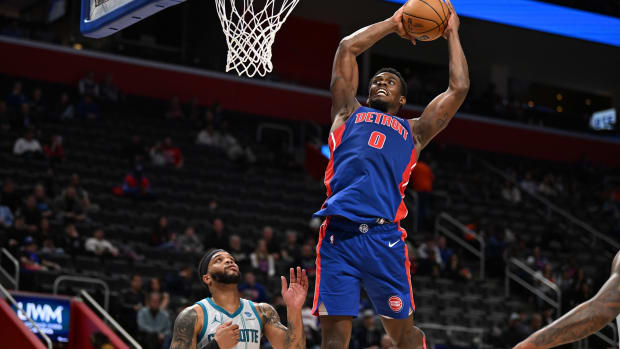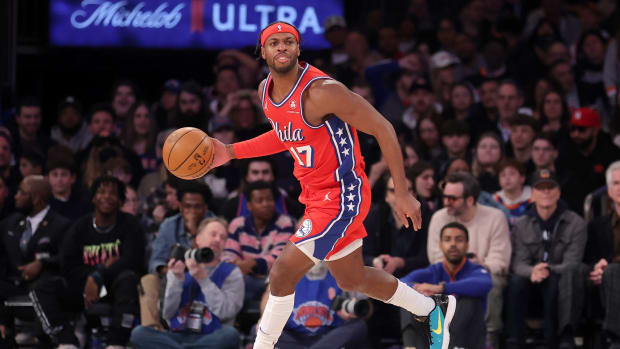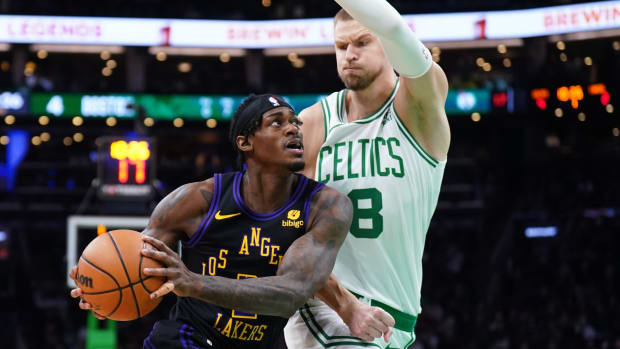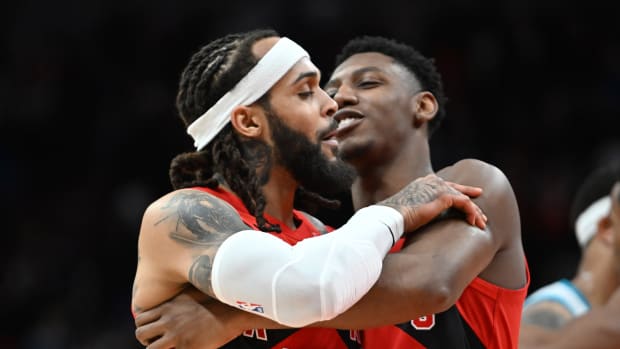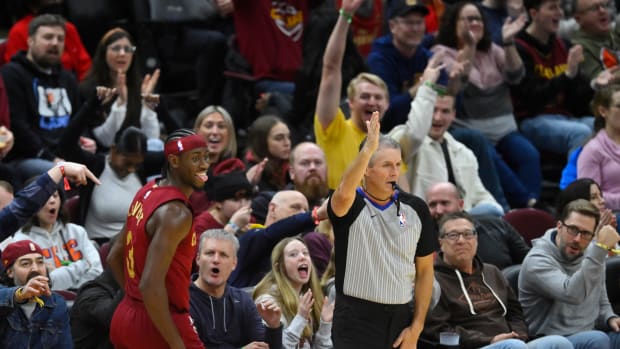Klay Thompson Unleashed: When The Warriors Star Takes Over
In every game, the Warriors transform. They shift from turnover-prone to savvy in a wink. They transition from a vaguely interested powerhouse to a decisive force come every third quarter. They let opponents run with them before changing shape—through switches and denial—to take away everything that offense needs to survive. We’ve seen an attack structured around Kevin Durant and one around Stephen Curry; lineups that unlock with JaVale McGee as a lob threat or David West as a floor balancer; and unabashed three-hunters shift toward smart cuts as a counter. If ever an opponent feels it has the Warriors pinned down, the slightest change in structure or focus can again spring them free.
NBA Mock Draft 3.0: Tourney Shakes Up Board
There is a Golden State variant for every occasion. One of them, however, is fleeting. Durant’s imminent return is an unquestionable positive for the Warriors though it spells the likely end of one of their more fascinating iterations: an MVP-less offense prime for a Klay Thompson takeover.
Durant missing more than a month tipped the balance of the Warriors’ rotation. No longer was Steve Kerr deciding which scorer to pair with Draymond Green in the rotation or how to best stagger his twin superstars. Curry and Thompson would have to stretch further as scorers and to do that means affording Thompson more minutes as a primary scorer. Thompson had logged 225 minutes without Durant or Curry on the floor in the 58 games prior to Durant’s injury—around 3.9 minutes per game, according to NBA Wowy. Once Durant went down, the Warriors nearly doubled that allotment over just 16 games, resulting in 11.9 minutes of Solo Klay per game.
In them, the Warriors run a patient offense. Golden State’s bench is particularly short on players who specialize in initiating a pick-and-roll or excel at breaking down their man off the dribble. So much, then, revolves around Thompson’s work away from the ball. “Floppy” action—in which Thompson starts under the basket and has his choice of screens to work toward either wing—is a staple:
Thompson runs looping routes that demand response from multiple defenders. A single opponent attempting to lock and trail is likely to meet the business end of a David West screen. So defenders all throughout Thompson’s course have to shift their position or make contact for the sake of holding the possession together. Even when they do, Thompson breaks the coverage with his height relative to the close-out and the efficiency of his shooting motion. Actually challenging the shot becomes so difficult that the initial screen set for Thompson becomes a source of drama. From that moment, any scrambling defender has but mere seconds to defuse a bomb.
And just when a defense exhales, Matt Barnes will cut in the opposite direction. Or Ian Clark might take a similar curl on the opposite wing. Thompson is such a threat to catch and shoot that he gives a provisional offense something to build around, all in a way that engages multiple defenders and punishes their mistakes. It’s a fun inversion. There’s only one real scorer in the lineup but he barely has possession. Instead, Green or Andre Iguodala holds the ball at the top of the floor and waits—reading Thompson’s every deke and stutter for the moment when his defender slips. Plays are initiated at a standstill and made possible with a flurry of activity.
Best of all: it usually works. Thompson himself averages 25.6 points per 36 minutes in those situations on true shooting comparable to Russell Westbrook, Blake Griffin, and DeMar DeRozan. Many of the lineups built around Thompson taking the lead come out positive in the end to help sustain leads or unexpectedly cut deficits. The approach isn’t infallible—and using Thompson as this kind of primary option is far too exhausting to be a larger feature—but it serves its purpose within Golden State’s broader repertoire.
There just isn’t much room for it in a world where Durant is logging his usual minutes or more. The Warriors’ most competitive playoff series will likely call for more than 34 minutes a game of Durant and Curry. There is little logical means of incorporating both of those stars that wouldn’t cut down on Thompson’s time in the lead. That’s for the best; as fun as he is taking over for minutes at a time, Thompson is best served as a punishing alternative. No matter their form, he is the Warriors’ looming presence—the instant threat that needs to be accounted for and the penalty for reacting too strongly to one of Golden State’s superstars. His turn as a designated showstopper will simply have to wait.































